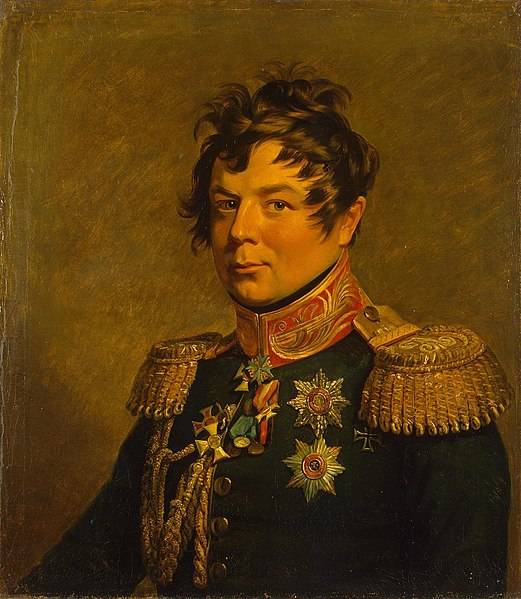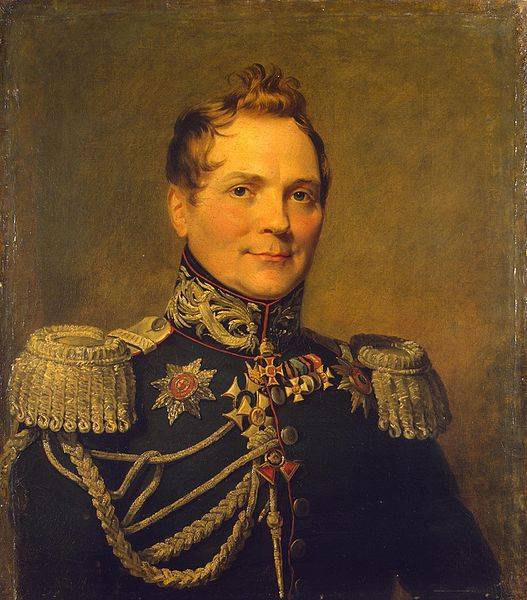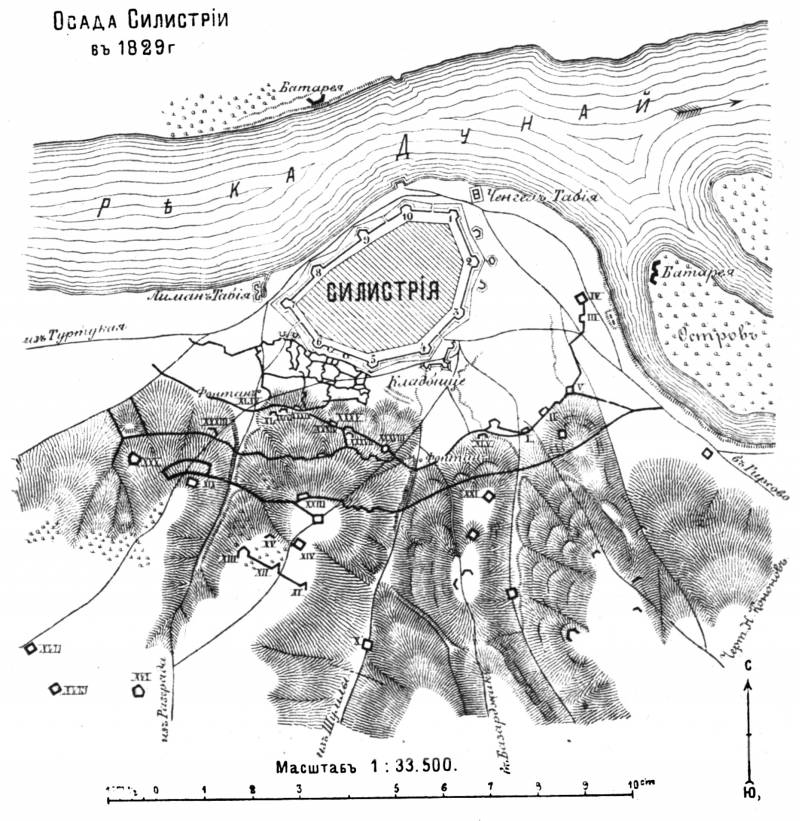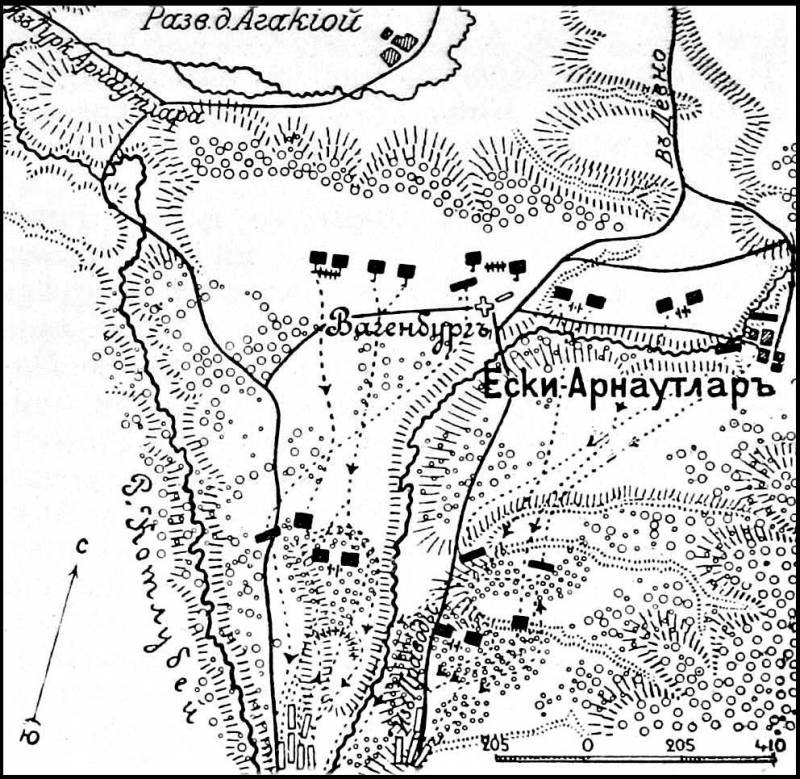The defeat of the Turkish troops in Silistria
Campaign 1829 of the year. New commander in chief
The 1828 campaign of the year did not lead to the defeat of the Ottoman Empire. The Russian army was attacked by insufficient forces, and when the Danube was forced to cross, troops were dispersed by the siege of three strong fortresses at once - Shumla, Varna and Silistra. This has led to an inappropriate waste of time and effort. Of the three sieges, only one ended in victory (the capture of Varna). At the same time, the Turks had the opportunity to defeat our army, if their command were more skillful, and the troops were better prepared.
As a result, all the errors attributed to the commander in chief Wittgenstein. Ivan Ivanovich Dibich was appointed the new commander-in-chief. He was the favorite of Tsar Nicholas, and during the war with Porto he was in the army, at first without any particular post. Therefore, Dibich knew the state of affairs in the army in full swing. Dibich had experience of wars with Napoleon, distinguished himself in a number of battles, then was chief of staff of the 1 Army and Chief of General Staff. 1829 year became for him a "star" and forever inscribed the name of Dibich in the military chronicle of Russia.
With his characteristic determination, Dibich began to prepare the army for a new campaign. First of all, he strengthened the artillery, both siege and field (problems with artillery largely predetermined the failure of the campaign 1828 of the year). The siege artillery was put in order and the number of large-caliber guns was increased to the widow (to 88). Field artillery is provided by horses for the transport of guns and charging boxes. For 24 six-pound mortars ordered new machines and 2 thousand charges for each. Mortars were used as mountain tools. They turned out to be indispensable in the conditions of the offensive in the Balkans. They could be installed in the mountains and sweep up the Turkish barriers on the mountain trails. The ammunition situation has improved. The new commander-in-chief demanded that the artillery parks of the first and second lines have ammunition for 14 infantry divisions and 15 battery companies. The field forces should not have been short of ammunition and shells.
In January, the Russian army on the Danube front 1829 numbered about 105 thousand people. About 20 thousand people from the reserve, located in Little Russia, were sent to replenish the troops in Amya. As a result, by the summer the Russian army numbered about 125 thousand people with 364 field and 88 siege weapons. This was slightly more than at the beginning of the 1828 campaign of the year, but not enough for a decisive offensive across the Danube, in Bulgaria. At the same time, the army’s sanitary condition was unsatisfactory: the unusually severe winter for these places and supply problems caused a high incidence.
To improve the supply of the army in the army stores have been created large reserves of food. Bread was purchased in the Danube principalities. Also, the grain was transported by sea from Odessa and brought by land roads from Podolia.
Dibich changes the chief of staff of the army. Instead of General Kiselev, General Karl Toll was appointed. He fought under the banner of Suvorov and was noted in the 1812 campaign of the year, being quartermaster-general of the 1 Army, and then the main army. The operational part of the headquarters was headed by another experienced General Dmitry Buturlin (the future military historian). Late spring slowed the start of hostilities. The Russian command decided in the first place to end Silistria in order to secure the rear of the army. Then, relying on Varna and the fleet (the Black Sea Fleet dominated the sea), force the Balkan Mountains and go to Constantinople, which was to force the Turkish government to capitulate.


The beginning of the fighting. Battle of Eski-Arnautlar
The Turkish army began fighting at the end of April 1829. Vizier Mustafa Reshid Pasha moved from Šumly to Varna with 25-thousand by the army. General Roth, who occupied Dobrudja, could oppose the enemy, except the garrison of Varna, 14 thousand soldiers. The Russian troops occupied Bazardzhik, Pravoda, Sizebol, Devno and Eski-Arnautlar, hiding behind a chain of Cossack posts.
5 May 1829, early in the morning, the Vizier approached Eski-Arnautlar with 15 thousand troops (10 thousand infantry and 5 thousand cavalry) to Eski-Arnautlar. Another Turkish column Galil Pasha at the same time went to Pravod. The Ottomans under Eski-Arnautlar were confronted by Major General Shitz, under the command of which were 6 battalions, 12 guns and a hundred Cossacks (total 3 thousand people). Three Turkish columns under the guise of riflemen, turned around in front of the redoubts, went to storm the Russian fortifications. The Turks achieved partial success, but soon the soldiers of Roth threw the enemy. Then hours of 4 beat off attacks of superior enemy forces. A detachment of General Vakhten (battalion 4 with 4 guns) arrived from Devno and delivered a flank attack on the enemy and forced the Turks to retreat. The simultaneous attack of the Galil Pasha column on Pravoda was also repelled by the troops of General Kupriyanov.
General Roth sent in the wake of the retreating enemy Major General Ryndin with the battalions of the Okhotsk and 31 th rangers, 5 guns. As a reinforcement, they were followed by the Yakutsk, 32 th Jäger regiments and 4 guns. Russian troops attacked the Ottomans, especially as they passed through the Derekiya Gorge. However, when entering the valley ran into enemy reserves. The Turks met two advanced battalions with strong rifle and artillery fire. Our troops suffered heavy losses. Then the Turkish cavalry surrounded the remains of the battalions. General Ryndin died. The remaining Russian troops continued to stubbornly fight back, and they were rescued by the arrival from Eski-Arnautlar under the command of Colonel Lishin. Also, a detachment of Kupriyanov soon arrived, having taken a sortie from Pravod, towards the evening the Turks retreated.
Thus, the Vizier’s army was reflected in the battles of Eski-Arnautlar and Pravod. During this battle, our losses were more than 1100 people, the losses of the Turks - about 2 thousand people.
Siege of Silistra
In May 1829, hostilities resumed on the Danube. Russian rowing river flotilla (more than 30 vessels) approached Silistra and began shelling the enemy fortress. The main forces of the Russian army began to force the Danube. However, the crossing was hampered by spring floods. The river is especially widespread in its lower reaches. They decided to force the Danube in two sections, far removed from each other (more than 200 km). The Turkish command did not dare to concentrate its forces in one place, so the Russian army crossed without problems. The first on May 9, in the region of Kalarash, two divisions of the 3rd Army Corps and part of the forces of the 2nd Army Corps crossed the river. Here, sappers for supplying troops to the river for a month built a 6,5 km long hut through a swampy floodplain. The crossing itself was carried out on ships of the Danube Flotilla, ferries and boats and boats assembled throughout the river, including ordinary rafts.
Russian troops immediately laid siege to Silistria and immediately seized all advanced earthworks - trenches and redoubts. The Turks retreated into the internal fortifications. In these battles, the Turks lost only killed before the 400 people, our losses - the 190 people. At the same time, the left bank of the Danube was cleared of small Ottoman cavalry units that attacked small units of the Russian army, fired on our army posts and conducted reconnaissance.
Fortress garrison numbered 15 thousand people. Silistra had a fortress wall with bastions of redoubts armed with guns. Fortress artillery numbered about 250 guns. The weak point of the Turkish fortress was that it was located in a lowland and was well fired from large-caliber guns from riverine heights. For the correct siege of a strong fortress it was necessary to smuggle siege artillery to the other side of the river. Light riverboats could not transport heavy weapons. It was decided to build a pontoon ferry near the town of Kalarash. Here on the river there were two islands that were supposed to greatly facilitate the crossing. However, the pre-built pontoons for the bridge were located higher along the river, 75 km from Silistra. They needed to be floated down the river under the fire of the batteries of Ruschuk and Silistria itself. They were also at risk of being attacked by the Turkish Danube Flotilla.
On dies placed on 25 soldiers. For towing pontoons (they were 63) used boats. They directed the pontoons carried by the river itself. At the forefront were large boats with arrows and ferries with guns and rocket launchers. The Turks tried to stop this flotilla with the help of several gunboats. However, the ferry on which there was a rocket platoon under the command of Second Lieutenant Kovalevsky, launched a rocket volley at enemy ships. The Turkish gunboats did not take the fight and ran under the protection of the coastal batteries of Silistria.
In late May, the pontoon bridge was successfully built. Coastal batteries were put on the islands in the event of an attack by the Turkish flotilla. Significant forces participated in the siege of Silistra: 29 battalions, 9 squadrons, 5 Cossack regiments and 76 field guns. In addition, there were still siege weapons, including Turkish captured weapons and weapons from the Danube Flotilla. Thanks to the successful siege work on 18 in May, two batteries began shelling the fortress from a distance of 600 meters. The Turks tried to fire back, but quickly lost an artillery duel.
Fall of Silistra
The systematic artillery shelling of the Turkish fortress was so successful that the Ottoman garrison, exhausted by bombardment and heavy casualties, surrendered 19 on June. Silistria surrendered to the mercy of the winner with all its numerous artillery and large reserves, which allowed to withstand a long siege.
During the siege of Silistra, the Turkish garrison lost 7 thousand people killed and wounded, more than 6,5 thousand people were captured. Losses of Russian troops: more than 300 dead and more than 1500 injured. The trophies of the Russian army were huge: hundreds of banners, about 250 guns, a large amount of ammunition. The Russian trophies were the 16 gunboats of the Turkish Danube Flotilla and the 46 of various vessels. Turkish sailors did not dare to go for a breakthrough and surrendered. The Russian Danube Flotilla established complete dominance on the river.
To be continued ...


Information